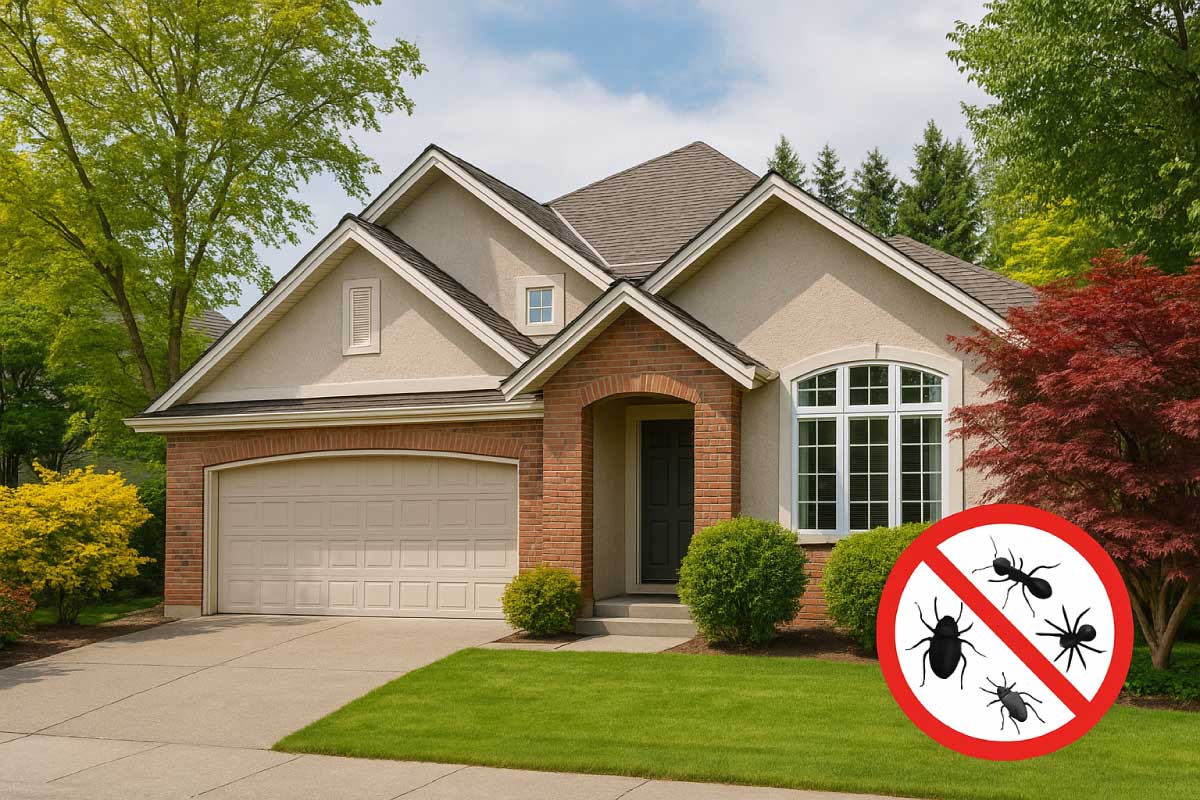Alberta’s diverse climate and growing urban development make it a prime location for both real estate opportunities and pest-related challenges. Whether you’re a homeowner, landlord, property investor, or real estate agent, understanding pest control is crucial for maintaining property value, ensuring tenant satisfaction, and protecting your residential real estate or commercial real estate assets.
Let’s explore key pest control tips that are especially relevant for Alberta’s unique environment, and how a proactive approach can enhance your real estate investment.
1. Why Pest Control Matters in Alberta Real Estate
Alberta’s climate—characterized by cold winters and warm summers—invites seasonal infestations from a variety of pests including rodents, ants, wasps, cockroaches, and more. From inner-city homes in Calgary and Edmonton to rural acreages, vacant properties, and new construction homes, pests can cause significant damage if left unchecked.
Key Reasons to Prioritize Pest Control:
- Preserves property resale value
- Prevents costly structural damage
- Supports a clean and healthy living environment
- Enhances curb appeal for prospective buyers
- Helps ensure compliance in rental properties
2. Common Pests Found in Alberta Properties
Understanding what pests you’re up against is the first step toward prevention and control. The following are the most commonly encountered in Alberta homes:
- Mice and Rats: These rodents seek warmth in basements, garages, and wall cavities during the winter. They chew on wires, contaminate insulation, and spread bacteria.
- Ants: Pavement ants and carpenter ants are typical nuisances. Carpenter ants, in particular, can compromise the structural integrity of older homes and heritage properties.
- Wasps and Hornets: Nest under eaves and in soffits, especially in detached homes and zero-lot line properties. Aggressive during summer, they pose a danger to families and tenants.
- Cockroaches: Often found in multi-family buildings, cockroaches thrive in warm, moist areas such as kitchens and bathrooms. An infestation can drive down rental rates and repel potential buyers.
- Spiders and Silverfish: Although mostly harmless, they can cause discomfort for tenants and reduce the marketability of your home.
- Bats, Birds, and Squirrels: These wildlife pests commonly nest in attics and chimneys, especially in homes near wooded areas or greenbelt communities.
3. Proactive Pest Prevention Tips
Preventing pests before they become a problem is more effective (and less costly) than dealing with an infestation. Here’s what you can do:
A. Seal All Entry Points
Use caulking, weather stripping, and steel wool to seal holes, cracks, and gaps in:
- Foundation
- Doors and windows
- Utility lines and pipes
- Attic vents and roof joints
Pro Tip: This is especially important when staging or prepping a home for open houses or home inspections.
B. Keep Landscaping in Check
Maintain trimmed hedges and trees. Avoid allowing branches to touch the roof, which can serve as pest highways into the attic. Also, avoid piling mulch or firewood against the home foundation.
This is critical for acreage homes, bungalows, and walkout basements where proximity to green space increases pest risks.
C. Eliminate Moisture Buildup
Many pests, like silverfish and cockroaches, are attracted to moisture. Repair leaky faucets and pipes. Ensure basements and crawl spaces are dry and well-ventilated.
Consider a dehumidifier in basement suites to keep humidity under control.
D. Cleanliness is Key
Maintain a clean kitchen, remove garbage regularly, and store food in sealed containers. This reduces the likelihood of attracting ants, mice, and cockroaches—an essential tip for rental properties and investment condos.
E. Store Waste Properly
Use sealed garbage bins with tight-fitting lids, and keep them away from doors and windows. Clean pet food bowls and avoid leaving pet food outdoors.
This is especially important for townhomes, duplexes, and shared wall dwellings where odors can travel between units.
4. Seasonal Pest Control Strategies
Pests in Alberta vary by season, so your strategy should too.
Spring & Summer
- Inspect for wasp nests and remove them early.
- Treat for ants using bait stations around foundations.
- Schedule a pest control inspection if listing your home for the spring market.
Fall
- Rodents seek shelter in homes—inspect garages, basements, and attics.
- Trim vegetation and rake leaves away from the house.
- Apply perimeter sprays or call professionals for barrier treatments.
Winter
- Inspect the attic and insulation for signs of animal nesting.
- Set up traps in garages and basements.
- Ensure that exterior vents are sealed with screens.
5. When to Call a Pest Control Professional
Sometimes, DIY methods aren’t enough. If you notice:
- Pest droppings or urine stains
- Chewed wires or insulation
- Hollow-sounding wood (from carpenter ants)
- Foul smells or sounds in walls or ceilings
…then it’s time to consult a certified pest control specialist. This is especially crucial before:
- Finalizing a real estate purchase
- Renting out a legal secondary suite
- Conducting a pre-listing home inspection
Professional services can also issue reports that provide peace of mind for buyers, sellers, and mortgage lenders during the transaction process.
6. Legal Considerations for Landlords and Sellers
Sellers
If pest activity is discovered during a property inspection, it must be disclosed. Failing to do so can result in legal disputes after closing.
Landlords
Under the Alberta Residential Tenancies Act, landlords must ensure that the rental property is habitable and pest-free. Tenants also have obligations to maintain cleanliness, but structural or recurring issues fall on the landlord.
Tip: Include a clause in your lease agreement regarding pest responsibilities and reporting procedures. This adds clarity in managing your rental portfolio.
7. Pest Control Tips for New Home Buyers
If you’re buying a new construction home, you might assume pests are a non-issue—but that’s not always the case. Construction often disturbs nearby pest habitats, which may drive them into freshly built homes.
Tips for new buyers:
- Ask the builder about pest prevention measures.
- Have the home inspected even if it’s brand new.
- Review your home warranty coverage to understand what’s included.
For those investing in pre-construction condos or spec homes, make sure the developer follows pest-resistant construction techniques.
Conclusion
Pest control is more than just a seasonal chore—it’s a key part of property maintenance that protects your investment, supports healthy living, and ensures a smoother experience for home buyers, tenants, and investors alike.
Whether you own a vacant home, manage rental property, or are preparing to list your home, proactive pest control should be on your checklist. For more advice on preparing your property for sale or tenancy, connect with the Tiwana Real Estate Team.
Written By Malvinder S. Tiwana
Tiwana Real Estate Team | www.maltiwana.ca
#AlbertaRealEstate
#PestControlTips
#HomeMaintenance
#PropertyCare
#HealthyLivingEnvironment









